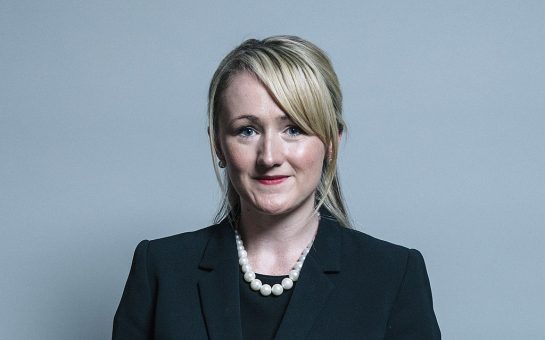Most parts of England, including the North West, have failed to meet national standards on ambulance response times, data from NHS England reveals.
The data, published in December 2023, shows the national average ambulance response to category one calls – the highest priority – was eight minutes and 32 seconds in November 2023.
On average the North West Ambulance Service (NWAS) was faster than that, responding in eight minutes and seven seconds.
But the national target is seven minutes.
Jeff Gorman, Branch Secretary of UNISON North West Ambulance Branch, pointed to one particular reason why ambulances are delayed.
He said: “In the first two weeks of December 2023, North West Ambulance Service lost more than 3,000 hours of ambulance time, which is the equivalent of 262 ambulance shifts, due to vehicles being held up outside emergency departments across the North West.
“It’s not fair on the patients and it’s not fair on the ambulance crews.”
The data shows the North West had the third quickest average response times to category one and category two calls in November 2023.
Only the North East met the national target for category one calls, while no region met the target for category two.
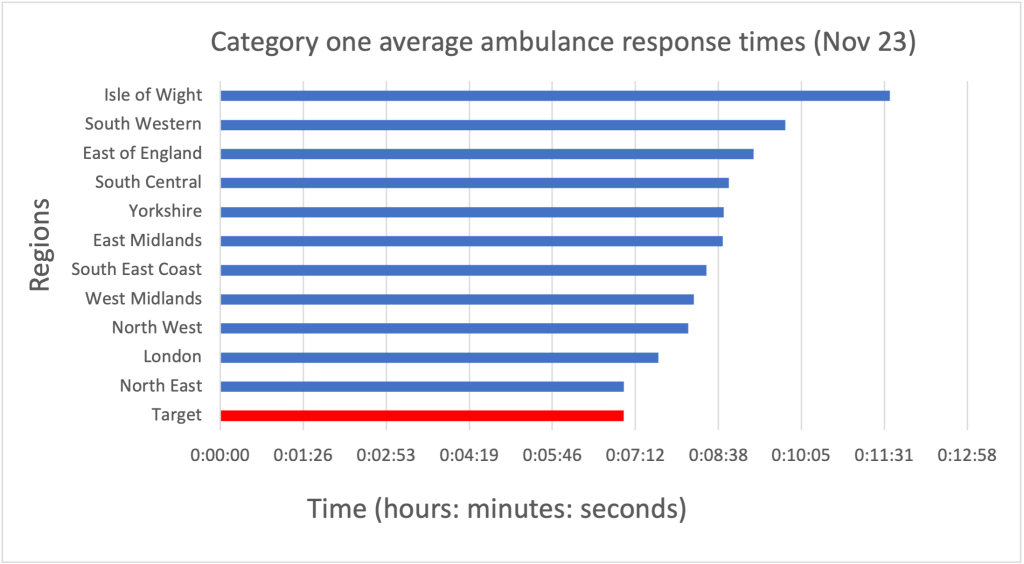
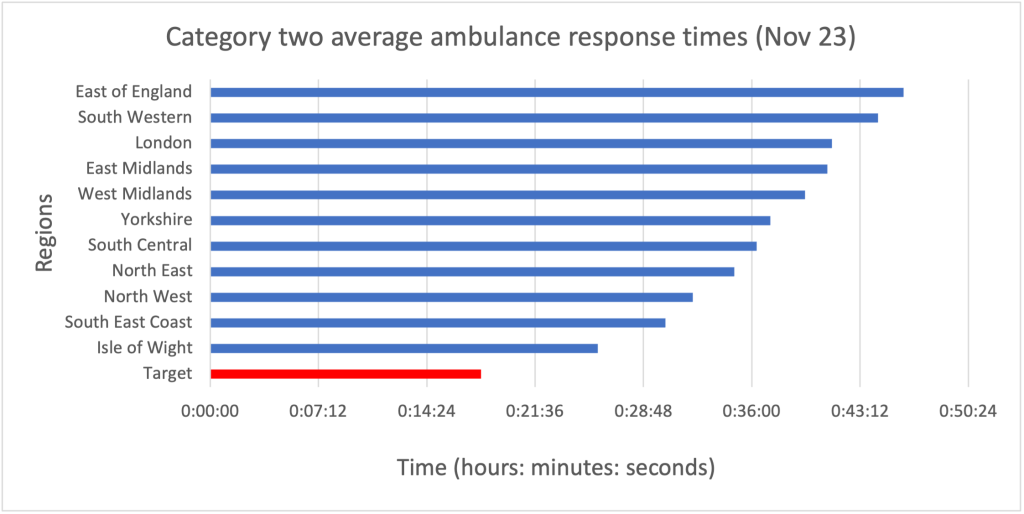
The North West has an urgent care service which responds to category three and four calls, sending designated ambulances to these patients. Despite this, the region had the fourth longest response time for category three calls in November 2023, at two hours and 33 minutes, compared to a national average of two hours and 16 minutes.
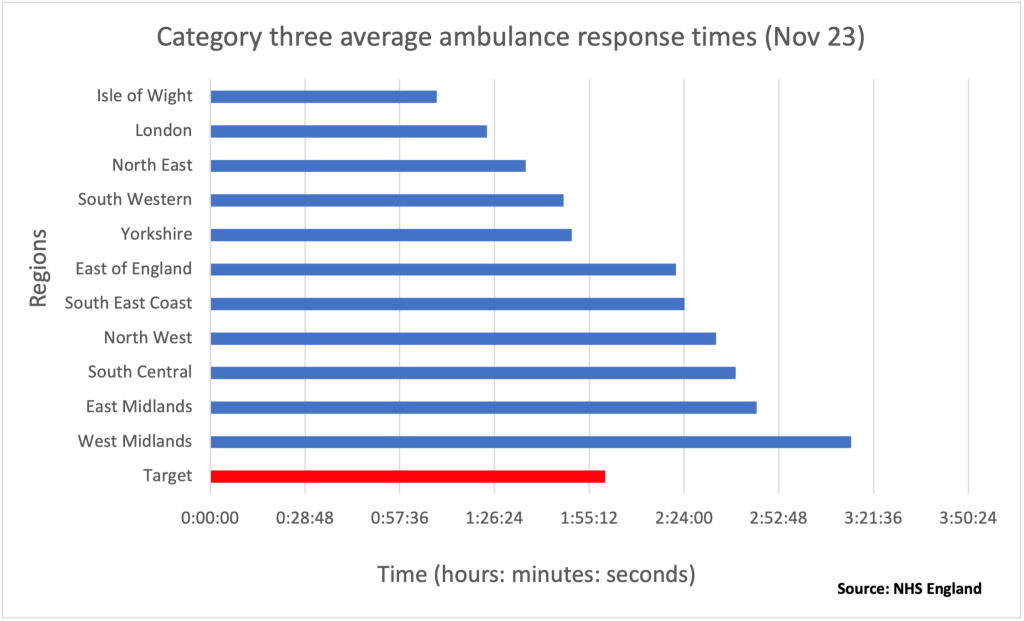
In England the average national ambulance handover time was 35 minutes and four seconds in November 2023, despite the target being 15 minutes.
During November 2023 the North West ranked seventh for handover times with an average of 31 minutes and 40 seconds.
The longest average handover time was recorded by South West ambulance service at one hour, ten minutes and 44 seconds, compared to the shortest average handover of 17 minutes and 17 seconds in the Isle of Wight.
Across England 405,712 handovers were recorded – 66.4% were over 15 minutes, 28.6% were over 30 minutes, 10.8% were over an hour and 9.5% were unknown.
There were 53,842 handovers recorded in November 2023 in the North West and 68.7% of these took over 15 minutes, 29.5% over 30 minutes and 10.1% over one hour. The handover time was unknown for 31.6% of cases – the highest in England.
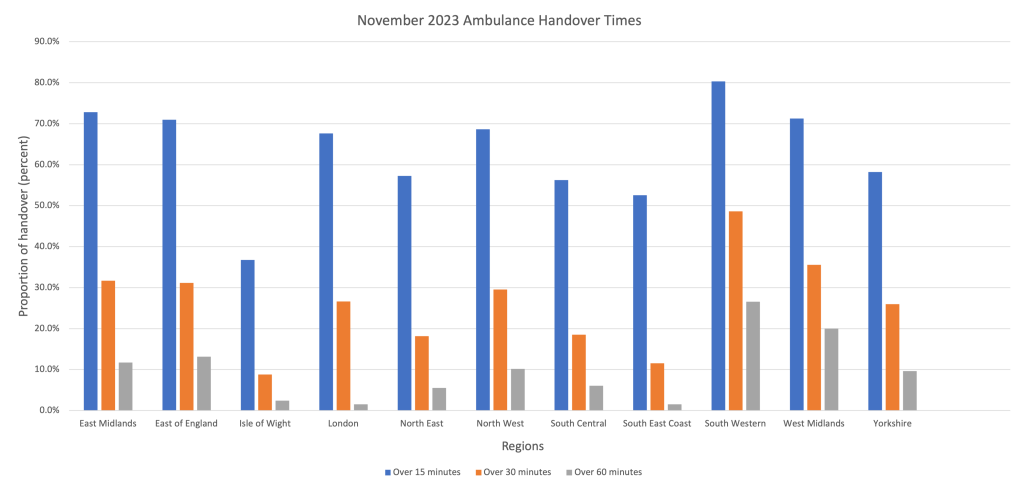
Gorman added: “The handover times are a major issue and have been for quite some time now. We’ve got ambulances at A&E departments for six, seven, eight hours at a time which causes problems for us as a service.
“While the ambulances are at the hospital they’re not responding to the 999 calls.
“Earlier on in the year some of the hospitals had 20 ambulances queuing up outside. It has certainly got worse over the last year. We’ve always had an element of delays, if you think about even ten years ago there were times where patients were queuing up on beds in the corridors.
“Now we can’t even get onto the corridors and we’re stuck outside.”
He said Cheshire and Merseyside are currently the most delayed areas in the North West and some paramedics have reported finishing their shifts more than three hours late – due to waiting outside hospitals to complete patient handovers.
In 2018 to 2019, NWAS recorded 108,310 category one calls with a response time of seven minutes and 54 seconds.
There were 13.2% more incidents between 2022 to 2023, with a 9% longer response time, reaching eight minutes and 36 seconds.
The North West also saw nearly three times as many calls to 999 between 2018 and 2023, whereas there were six times as many calls in the same period nationally.
In 2018 to 2019 there were 590,884 category two incidents in the North West, with a mean response of 24 minutes and 14 seconds, compared with 570,596 incidents in 2022 to 2023, with wait times of 42 minutes and 19 seconds on average. Despite receiving 3% less cases, the response time was 75% longer.
Similarly there were 257,690 category three calls recorded in 2018 to 2019 but 39.3% less in 2022 to 2023, at 156,357. The response time in 2018 to 2019 was one hour, eight minutes and 29 seconds, compared with three hours, seven minutes and ten seconds in 2022 to 2023 – leaving patients waiting nearly twice as long.
On average, since 2018 there have been more resources allocated to category one calls but less resources for category three incidents in England. Between 2018 and 2019 there were 1,147,177 resources dedicated to category one calls, but this increased by 27% in 2022 to 2023. In the same period, category three calls received 35% less resources – decreasing from 3,346,232 in 2018 and 2019 to 2,183,034 in 2022 to 2023.
This trend can also be seen in the North West, where there were 8% more ambulances responding to category one calls but 39% less ambulances attending category three calls.
Saoirse Mallorie, Senior Analyst at The King’s Fund, said: “Workforce remains an issue, there are high vacancy and turnover rates and if the system is fundamentally short-staffed then it can’t be dealing with the volume of demand that is currently underway.
“The population is growing and ageing, so the demand will go up. We are also seeing more people struggling to access their GP or early stage services, so it is possible that whatever problem they have is due to a lack of access and they reach crisis point and end up having to call an ambulance.
“Instead we should shift the focus away from all healthcare being hospital related and towards a more preventative approach, so the ambulance isn’t needed in the first place and people don’t get to that level of illness.”
A North West Ambulance Service spokesperson said: “Winter continues to provide a challenging period for the ambulance service. However, response times have improved significantly compared to 12 months ago. We are one of the best-performing trusts within the sector and are very proud of our dedicated workforce, who do their best to help everyone who calls us for help.
“Thanks to additional funding from the government, we have added ambulances and staff on the road and increased staffing in our call centres. And collaboration with our hospital partners has made an impact on handover delays. The number of long waits patients are experiencing has also reduced significantly.
“We continue to develop how we operate and make the most efficient use of our resources to improve the service and the experience of our patients.”
Featured Image from Ian Taylor, free to use under the Unsplash License

